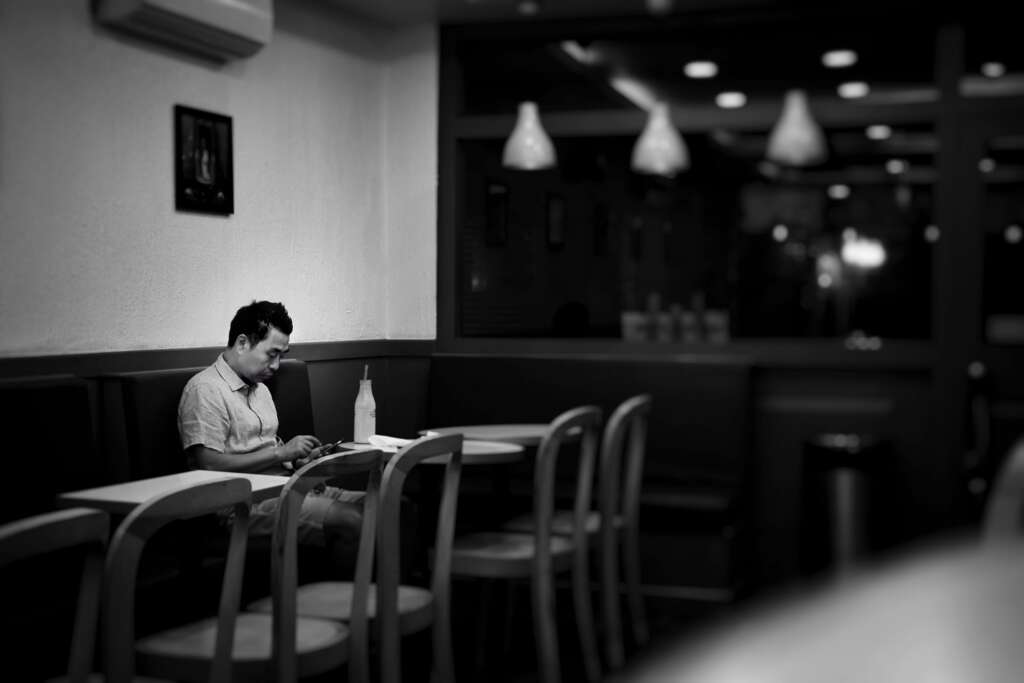Share This Article
“All of humanity’s problems stem from man’s inability to sit quietly in a room alone.” — Blaise Pascal

Lady Gaga once told Wallpaper magazine, “I want to live a life of solitude,” and most creative people nodded in agreement. Designing spaces for solitude does not just mean creating a quiet retreat, but a fertile ground for creativity and reflection. For those who create, solitude is a gift. Take Antoni Gaudí, for instance. He spent much of his time alone, often immersed in nature, and it was in these moments of solitude that inspired to create his architectural masterpieces.
History proves that solitude is nothing to be feared. It’s often when we allow our minds to wander that they truly flourish. But is there room for solitude in urban spaces? Most public environments are designed with social interaction in mind, centred around groups. Workspaces rarely offer quiet zones. And homes, especially in India, don’t always guarantee privacy or peace.
So, the question is: Are there any ‘third places’ that can provide the solitude necessary for the next creative breakthrough to occur?
Solitude and Loneliness
There has been a significant shift in attitudes toward solitude. In the past couple of years, several works of art have introduced solitude in a positive light (for example, Emma Gannon’s recently published novel ‘Table for One‘).
Solitude, sometimes mistaken for loneliness, is a subjective state chosen for positive reasons like peace, reflection, and rejuvenation. Loneliness, on the other hand, is an emotional state characterised by feelings of isolation and disconnection, often accompanied by distress. While loneliness depletes us, solitude replenishes us.
Due to the confusion between them, solitude is usually alienated. However, post-pandemic, after people got a taste of the so-called loneliness epidemic, many began to understand the difference. While interest in solitude is growing, there are still not enough public spaces that truly encourage or accommodate it.

Challenges in Current Public Spaces
Most public spaces are designed for interaction, activity, or media consumption. Recently, café culture in India has been booming—not just in metro cities, but also in Tier 2 and 3 towns. Yet these cafés are built around the idea of groups, influenced heavily by pop culture, like the Central Perk in Friends or the bar in How I Met Your Mother. These are the ‘third places’ (spaces between home and work meant for connection and unwinding) that society celebrates.

And of course, with the rise of social media, many third places are now digital. Platforms themselves have become places of gathering. But amidst all these spaces built for connection, the space to be alone or to just exist is increasingly rare. The idea of slow living in cities is almost lost in today’s fast-paced, overstimulated environment.
Every city has hundreds of cafés, but how many allow you to sit quietly without drawing speculation? How many parks offer secluded corners for reading, writing, or simply existing undisturbed? Even the phrase table for one is often met with suspicion. The absence of space for solitude in urban spaces is what creates the stigma around it.
Making Space for Aloneness
Public and semi-public spaces should be designed in a way that invites people to come alone. For instance, public spaces can include furniture suited for individuals, which can visually normalise being alone. Parks can include chairs for individual activities that don’t signal the absence of others. Similarly, cafes could adopt circular or asymmetrical seating that doesn’t define how many people should sit at each table.

First solo dining restaurant in Toronto
Libraries and book cafes have a great opportunity for a ‘third place’ design that includes considerations for solitude. They can include secluded corners dedicated to a single person. Even spaces like airport lounges and museums can include inviting spaces for individuals. Harvey Milk Terminal in San Francisco, for instance, features lounge chairs facing outward with planters behind, creating a buffer where people can rest, read, and think without feeling watched.
Solitude-friendly spaces don’t have to be elaborate. A simple view, partial enclosure, acoustic insulation, or natural elements like water and trees can create quiet, restorative environments. Most importantly, good design should open the door to introspection in architecture, supporting the psychological well-being of its occupants. It should allow individuals the flexibility to move between solitude and sociability, depending on their mood and comfort.

The Garden of Silence in Chandigarh is a prime example of how urban spaces can accommodate both groups and individuals. This garden features meditative areas, art sculptures, and tranquil views of the lake, inviting individuals to meditate and reflect in solitude. It frequently hosts events such as poetry slams and quiet reading sessions, providing opportunities for individuals to engage in meaningful activities.

Challenges of Designing Spaces for Solitude
While designing for solitude holds promise, it’s not without challenges. There’s still a cultural discomfort around being alone in public, and most designers or planners overlook the need for such spaces. Often, this is because public areas are monetized—cafés and commercial buildings are often designed for footfall and profit over peace.
A bigger concern is safety, especially for women. Being alone in public can feel vulnerable and attract unwanted attention. Secluded spaces must be designed with safety in mind. Visibility, accessibility, lighting, and subtle surveillance become critical when solitude is the goal.
A Reminder to Promote Solitude
In the age of social media, there is little room for stillness. We live in a time of constant stimulation, where even our third places are gradually disappearing. Solitude is something that can ease our minds and give our overstimulated consciousness a break.
Designing spaces for solitude is not just about being alone but about making space for reflection, stillness, and belonging – an essential part of public space and mental well-being. In a world that rarely slows down, these spaces remind us that it’s okay to simply exist.
